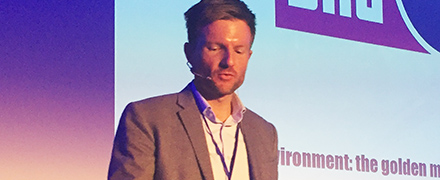How BILD made its freemium model a success just 2 years in
Conference Blog | 20 October 2015

Germany’s biggest newspaper, BILD, introduced its freemium model two years ago. Its parent company, Axel Springer, considers it a success with more than 290,000 paying digital subscribers so far.
Before 2013, most of BILD’s income from digital came from digital advertising, Tobias Henning, general manager/premium at BILD, explained to delegates on the second day of the INMA European Media Conference in Budapest, Hungary.
Yet after introduction of iPhones and iPads, and, particularly in its market, iTunes, Axel Springer learnt how to sell content. Then the company decided to do it online, Henning explained.
When making the decision to introduce a pay model for content, Axel Springer didn’t want to subsidise one income with another; the media company definitely looked after both pillars of revenue, he said.
All Axel Springer apps are full paid, meaning users must pay for access even if a particular article is online for free. But for the BILD+ Web site, Axel Springer decided this was not the right model. In addition, the company decided the metered model was not good for BILD+, as the character of the title (tabloid) did not match this strategy, Henning said.
Instead, the company opted for a freemium model, the main reason behind the decision being that employees can decide at any moment which content should be free and which paid for.
Today, about 20% of the articles are paid while 80% are free. What’s most important is that the reach is still there and growing.
Henning thinks the metered model is not working in general throughout the industry, as it’s not giving publishers the choice of which article should be free and which one should be charged for.
The goals of the BILD+ model were to:
- Establish an online payment culture for editorial content.
- Retain BILD’s market leadership across all platforms.
- Establish a BILD brand subscription and support BILD’s print circulation.
- Generate sales revenues in the digital business.
BILD also manages to support print circulation, combining the online and offline world. BILD prints a superticket with a use of special inkjet technology. Thanks to a special code, print readers can read BILD+ for free on the day they buy the newspaper.
Today, BILD sells subscriptions through all channels: Web/mobile Web, apps, and B2B cooperations. It seems to be working, Henning said:
- One subscriber generates 10 times more ARPU (average revenue per user) than a regular user.
- BILD’s reach is still growing.
- The media company already has more than 290,000 subscribers.
- Content is king: Less than 20% of the subscriptions are generated through marketing.
Paid content works, Henning said, but it’s all about the content.




























